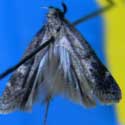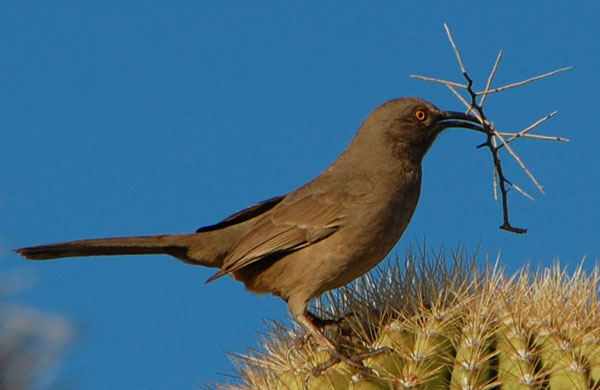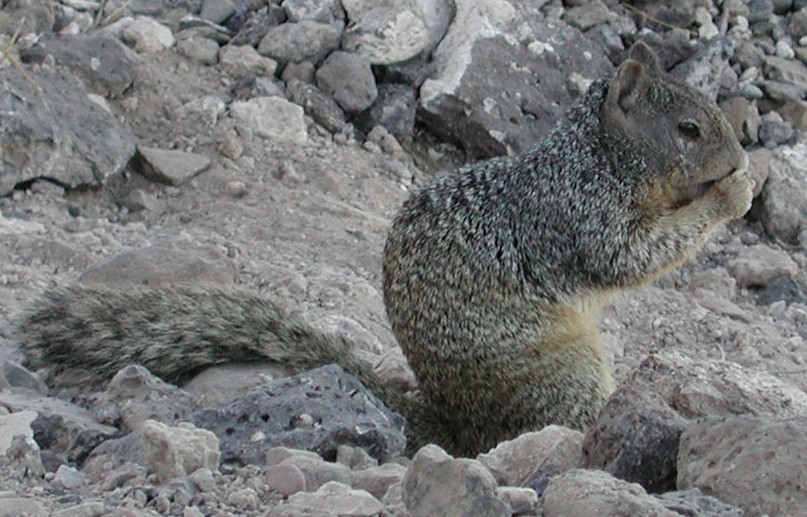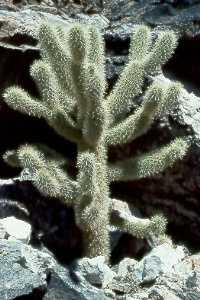Despite over a 100 years of sometimes intense human impact such as mining and ranching, this Upland Sonoran Desert area remains beautiful and alive with many wondrous desert plants and animals. The volcanic rocks are colorful and offer many wondrous hills and peaks.
Head west out of Wickenburg, AZ, on US-60 heading to Los Angeles. Take Vulture Mine Road southbound at the Safeway store. The road maintained by Maricopa County is smooth and freshly paved. Some 8 miles south there is a BLM parking area and trailhead on the east side of the highway. (Notice: Do not turn on Vulture Peak road - the trailhead is about a mile further down the road.) A four wheel drive road will get you a mile closer to the peak ... but you will be missing some nice desert habitat to walk through. Be sure to sign either the upper and lower trail registers. I think it helps to let the BLM know the area is important to hikers and tourists. The view from the peak is well worth the effort.
From the trailhead, the trail heads east and soon crosses a desert wash with an unusual name: "Syndicate Wash". Be sure to catch the trail on the opposite bank marked by cairnes. After the first kilometer the incline steepens and there is an abundance of loose stones and gravel. A good walking stick could help. For most people the pass is a good destination. The final few hundred meters to the summit is not maintained and requires agile climbing.
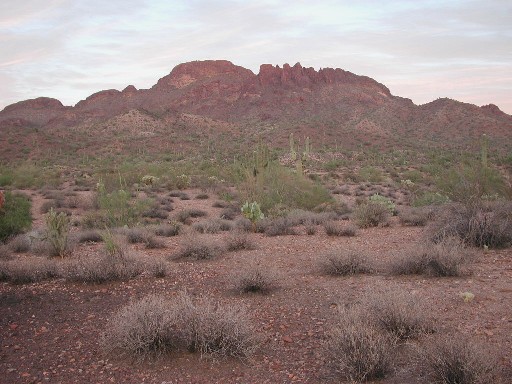
With dusk the setting sun casts an orange-red glow on an already reddish mountain. A composition of 25-million-year-old volcanic tuff, brecca and rhyolite, that is soft and easily eroded, has helped sculpt the steep cliffs and rugged cuts. The rock is fairly water-permeable allowing a wide variety of plants to make good use of often scarce rainfall.
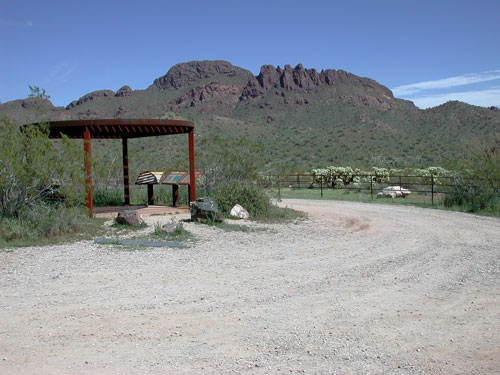
There are interpretive signs and a covered seating area. Rough camping areas abound along the many jeep roads nearby.
Google Map of Surrounding Areas
View Larger Map. The road to Vulture Peak turns off US 60 to the south. A Safeway supermarket is at the intersection.
